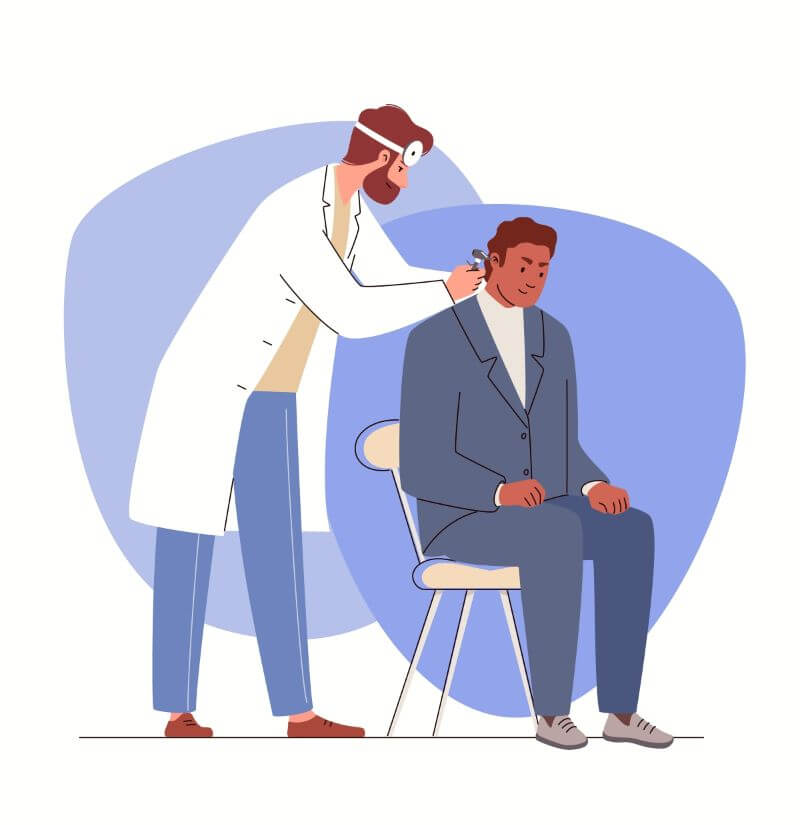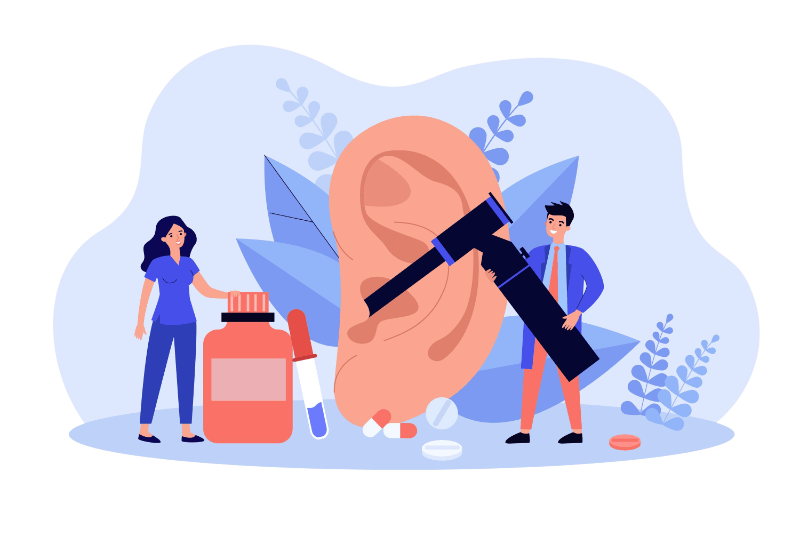Northern Hearing Health Centre
Ear Wax Removal
Our audiologists are trained in different techniques and have tools to provide safe and effective Ear Wax Removal.
Our specialized equipment provides an effective and comfortable solution.
At The Northern Hearing Health Centre, we provide ear wax (cerumen) removal services. Our audiologists are trained in different techniques to provide safe and more effective professional methods than home-based treatments.
At-home options often include using Q-tips or other objects inserted into your ears. These can push wax deeper into the ear, causing a wax impaction. An entirely blocked ear can cause pain, fullness, tinnitus, balance disturbances and reduced hearing.
How Do Audiologists Perform Ear Wax Removal?
At The Northern Hearing Health Centre, we use two main methods to remove ear wax from the ear: irrigation and curette removal.
We have specialized equipment called The Earigator that regulates pressure and temperature. Warm water is introduced into the ear canal and gets behind the wax to push it outwards. This system was designed by an ear specialist and is a safe and comfortable way to remove excessive wax build-ups. Many people have referred to it as an 'ear spa.'
Depending on the nature of your impacted cerumen, we may also use an LED lighted curette. A curette is a long, thin tool with a curved end that lets us scrape or scoop cerumen from your ear canal. The curette material is gentle on the ear canal but strong enough to pick out hard wax. We also use lighted headgear with magnification that allows us the best visual for safety and precision of removal.
What Causes Impacted Ear Wax?
Some people produce more wax than others. We often see wax build-up from objects in the ear, such as earplugs, earbuds or hearing aids. Some ears are narrow and fill up quickly.
Wax blockages are quite common; however, it doesn't usually become impacted until people put objects in the ear to remove them. Using Q-tips or other tools can compress ear wax, making it denser. Over time, it hardens, creating discomfort and reduced hearing.
What Happens If You Don't Remove Impacted Ear Wax?
Impacted ear wax can produce several symptoms. These include pain, ear fullness, dizziness, tinnitus and reduced hearing.
Who Is Most at Risk of Impacted Ear Wax?
People with small or narrow ear canals, those that use Q-tips or regularly use ear plugs, earbuds or hearing aids and older adults tend to have more problems with wax build-up.
If you have symptoms of impacted wax, contact our office to book your appointment for professional earwax removal.

Thank you for voting us the #1 Audiology Clinic!


Thank you for voting us the #1 Audiology Clinic!


